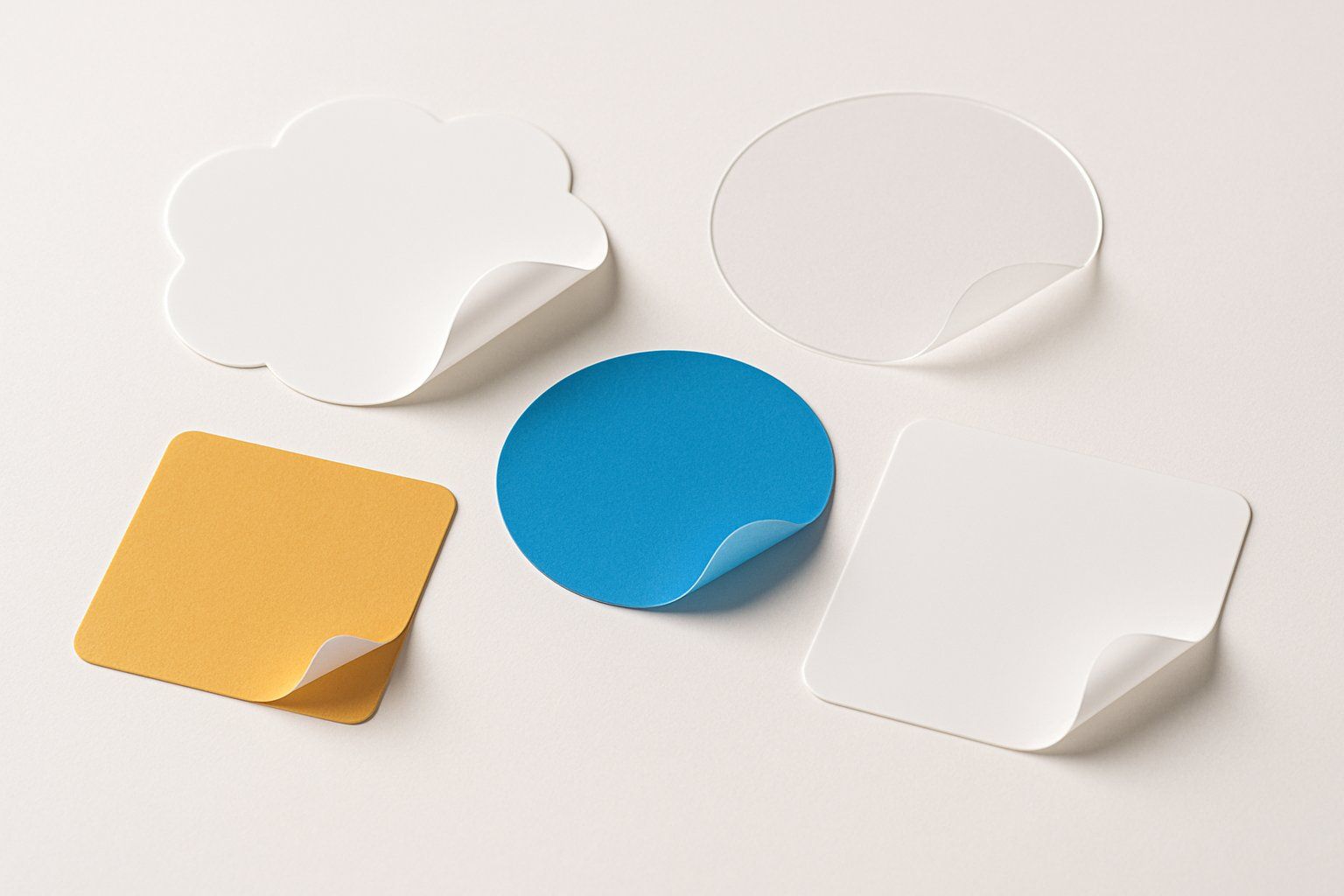Seasonal Print Campaigns: Timing Your Mailers for Maximum Impact to Boost Engagement and Sales
Seasonal print campaigns can boost customer interest when timed right.
The key to success is sending your mailers just before or during peak buying periods.
This way, your message reaches people when they are ready to act.

Knowing the best times for your audience means looking at past sales and shopping habits.
We can plan our mailers to match important holidays, events, or seasonal changes to get the biggest response.
Quality design and clear messaging also help make a strong impact.
Timing is just one part of the strategy.
Combining print with online efforts and tracking results lets us improve each campaign.
Key Takeaways
- Timing mailers around key seasons drives higher customer engagement.
- Clear design and relevant messaging increase mailer effectiveness.
- Tracking results helps refine future print campaigns.
Understanding Seasonal Print Campaigns

Seasonal print campaigns need careful planning to catch the attention of consumers when they are most ready to buy.
We focus on timing, consumer habits, and marketing strategies that make direct mail effective during specific times of the year.
What Are Seasonal Print Campaigns?
Seasonal print campaigns are marketing efforts that target customers at certain times, like holidays or weather changes.
These campaigns use printed materials like postcards, flyers, or catalogs that highlight products or services related to the season.
For example, a winter campaign might promote warm clothing, while a summer campaign focuses on outdoor gear.
These campaigns aim to connect with what customers need or want during that season.
Timing the mailers to match the season can increase interest and sales.
Why Timing Matters for Mailers
Timing is key in seasonal print campaigns.
Sending mailers too early or too late can reduce their impact.
If we mail too early, customers might not be thinking about buying yet.
Too late, and we risk missing the main shopping period.
We track important dates, like holidays or the start of a season, to send mailers when people are most likely to respond.
This planning helps improve response rates and return on investment.
Good timing also helps our mailers stand out among other offers.
Seasonality and Consumer Behavior
Consumer behavior changes with seasons.
People tend to buy different products depending on the time of year.
For instance, back-to-school shopping spikes in late summer, and gift buying increases in the holiday season.
Understanding these behaviors helps us create more relevant print campaigns.
When mailers match what customers want, they are more likely to open, read, and act on them.
Seasonal marketing strategies rely on these patterns to increase customer engagement with direct mail.
Identifying the Best Timing for Your Mailers

Timing mailers right can boost response rates and make each campaign more effective.
We need to focus on key calendar dates, industry patterns, and how our customers shop throughout the year.
Analyzing Key Dates and Holidays
We should first map out important holidays and events like Black Friday, Christmas, and Easter.
These dates often bring higher consumer spending.
For example, sending mailers two to three weeks before Black Friday lets our audience plan their purchases.
Other key moments, such as back-to-school or tax season, may also fit our products or services.
Planning campaigns around these can target customers more precisely.
Using a calendar with target marketing windows helps us organize mailer schedules to catch consumer attention when they are ready to buy.
Understanding Industry-Specific Seasons
Each industry has its busy and slow seasons.
For example, retail peaks during the winter holidays, while gardening supplies sell best in spring.
We should study sales data to find when our market is most active.
If our business serves a niche, like outdoor gear, our mailing should align with seasonal activities or weather changes.
Contacting regular customers before a season starts can increase orders.
Adjusting campaigns to industry rhythms helps avoid wasted mailers.
Aligning with Consumer Buying Cycles
Customers don’t shop at random times.
They often plan purchases ahead or buy after paydays or bonuses.
Knowing our target market’s spending habits helps us time mailers for when they have money to spend.
For example, mailers sent right before weekends or monthly payday periods tend to get better responses.
We should also note special sales periods, like holiday sales, when buyers expect deals.
Matching mailers to these cycles maximizes impact and drives more sales.
Building a Seasonal Print Campaign Strategy
To create an effective seasonal print campaign , we focus on setting clear goals , identifying the right audience, and wisely using our marketing budget.
Each step helps us plan and execute a successful mailer that reaches customers and drives results.
Setting Campaign Goals
We start by defining what we want to achieve with our seasonal print campaign.
Goals might include increasing sales, launching new products, or boosting brand awareness during key seasons.
Clear goals help us choose the right messaging and design for our mailers.
We use specific, measurable targets like reaching a 10% sales increase or generating 500 new leads.
This guides us in tracking progress and measuring success.
Setting timelines is essential so we know when to start and end our campaign to match the season’s peak interest.
Defining Your Target Audience
Understanding who we want to reach is critical.
Our target audience includes the customer base most likely to respond to our seasonal offers.
We use data from past campaigns, purchase history, and demographics to pinpoint this group.
Segmenting the audience allows us to tailor messaging to their needs and preferences.
For example, holiday campaigns might focus on families, while summer sales could target young adults.
The right audience helps improve response rates and campaign efficiency.
Allocating Your Marketing Budget
We decide how much to spend based on expected returns and campaign goals.
A clear marketing budget ensures we don’t overspend and that resources are used effectively.
Typical costs include design, printing, postage, and sometimes mailing list purchases.
We prioritize spending on high-impact elements, such as quality materials or targeted mailing lists.
Budgeting also means leaving some funds for testing or follow-up mailers if needed.
| Expense Area | Purpose | Budget Priority |
|---|---|---|
| Design | Visual appeal and messaging | High |
| Printing | Quality materials | Medium to high |
| Postage | Delivery of mailers | Essential |
| Mailing List | Target audience contacts | Medium |
We regularly review our budget to adjust allocations based on campaign performance and upcoming marketing strategies.
Designing Impactful Marketing Materials
Effective marketing materials need careful design to catch the reader’s eye quickly.
We focus on the format and fold of the mailer, strong headlines, and special offers to boost response rates and print value.
Choosing the Right Format and Fold
The format of our mailer affects both appearance and cost.
Common options are postcards, flyers, and brochures.
Postcards are simple and affordable, while brochures allow us to share more details.
Folds change how the mailer feels and organizes information.
A tri-fold, for example, breaks content into clear sections.
This makes it easier for readers to digest the message.
We consider how the fold aligns with our marketing goals and printing budget.
Choosing the right paper weight and finish supports the overall impact.
Glossy finishes catch the eye but cost more.
Matte looks professional and can reduce glare for easy reading.
Crafting Eye-Catching Headlines
Headlines must grab attention immediately.
We use clear, direct language that tells readers what they will get.
Avoiding vague phrases helps keep the message strong.
Starting with action words like “Save,” “Discover,” or “Join” motivates readers to act.
We keep headlines short, around 5 to 8 words, to be easy to scan.
To support headlines, we use bold fonts and contrasting colors.
This ensures they stand out on the printed page.
The headline sets the tone for the rest of the marketing material, so it must align with the offer and timing.
Including Exclusive and Limited-Time Offers
Exclusive deals encourage people to respond quickly.
We highlight these offers using banners or call-outs in our design to make them visible.
Limited-time offers create urgency.
We include clear deadlines such as “Offer ends May 31” to boost action.
Timing the mailer for peak interest around that deadline makes the offer more effective.
We make sure any terms and conditions are easy to find but don’t clutter the main message.
This builds trust while keeping focus on the benefit.
Key points for exclusive offers:
- Use strong visuals to highlight the deal
- Include a clear deadline
- Keep terms simple and accessible
This approach helps our marketing materials perform better when printed and mailed.
Personalization and Messaging for Maximum Engagement
We want to connect with people in a way that feels personal and drives action.
Using the right words and data helps us make each mailer more relevant and encourages recipients to respond.
Incorporating Personalized Messages
Adding a personal touch to our mailers improves how people react.
We should use names, locations, or past buying habits to make messages feel unique.
For example, greeting someone by name or referencing their last purchase shows we know them.
Personalized messages build trust and make recipients more likely to read the full mailer.
We need to keep the language friendly but professional, so it feels genuine without being too casual.
Staying clear about benefits tied directly to the person’s needs increases engagement.
Using Variable Data for Customization
Variable data lets us change text, images, or offers within the same mailer based on who gets it.
This helps us send tailored content without creating separate designs for each group.
We can swap product photos to match interests or adjust pricing based on a customer’s history.
This flexibility saves time and money while giving each recipient relevant info.
The key is making sure the data is accurate and updated to avoid mistakes that reduce trust.
Creating a Strong Call-to-Action
A clear call-to-action (CTA) tells people exactly what we want them to do next.
Using phrases like “Shop Now” or “Claim Your Discount” helps avoid confusion.
The CTA should stand out visually and come after personalized content.
We want to keep CTAs direct and easy to follow.
Offering limited-time deals or exclusive offers motivates faster responses.
Testing different CTAs can help us find what works best for each audience.
Optimizing Mailing and Distribution Tactics
To get the best results, we focus on targeting the right audience, using efficient mailing services, and testing different parts of our direct mail pieces.
These steps help us reach customers more effectively and make sure our seasonal print campaigns perform well.
Building and Segmenting Mailing Lists
We start by creating mailing lists that match our campaign goals. It’s important to segment these lists based on factors like location, age, buying habits, and past responses.
This helps us send mailers that feel more relevant to each group. Using data from previous campaigns or customer databases, we can refine our segments over time.
For example, we might target frequent buyers with exclusive offers and prospects with introductory materials. Segmenting ensures we don’t waste resources sending mailers to uninterested people.
Leveraging Mailing Services
Choosing the right mailing service can lower costs and speed up delivery. We compare options for bulk mailing, automation, and tracking.
Services like USPS Every Door Direct Mail or private carriers offer different benefits depending on volume and reach. We also consider services that provide address cleaning and formatting to reduce returns.
Using mailing services with tracking features lets us monitor when and where mailers are delivered. This data helps us adjust timing and distribution for future campaigns.
Testing Inserts and Campaign Elements
Testing different inserts and elements inside our direct mail pieces is key to understanding what works best. We try variations like coupons, flyers, or samples to see which drives the most responses.
We use small test groups to measure each insert’s impact before scaling up. Changing the design, messaging, or offer in inserts helps us find the best combination.
Measuring and Analyzing Campaign Performance
To understand how well our seasonal print campaigns work, we need to look closely at key numbers like response rates , conversion rates , and return on investment.
Collecting direct feedback from customers also gives us useful insights to improve future mailers.
Tracking Response Rate and Conversion Rates
We track response rate to see how many people react to our mailers. This could be by using special codes, phone numbers, or URLs included in the mailer.
Calculating response rate helps us understand the level of interest in our offer. Conversion rate shows how many people actually complete the desired action, like making a purchase or signing up.
Conversion rates are usually lower than response rates because not everyone who responds buys something.
To calculate these:
- Response rate = (Number of responses ÷ Number of mailers sent) × 100
- Conversion rate = (Number of conversions ÷ Number of responses) × 100
Calculating Return on Investment
Return on investment (ROI) tells us if the campaign made more money than it cost. To calculate ROI, we compare the total sales generated from the campaign to the amount spent on printing, mailing, and design.
ROI formula:
ROI = [(Sales generated – Campaign cost) ÷ Campaign cost] × 100
A positive ROI means the campaign boosted sales enough to cover the cost and deliver profit.
Gathering Customer Feedback
Direct feedback from customers reveals why some mailers worked and others didn’t. We can get this through surveys, follow-up calls, or online reviews linked from the mailer.
Feedback helps identify what messages attracted customers and what caused confusion or disinterest. Knowing this lets us improve wording, timing, and offers in future campaigns.
We prioritize honest responses, focusing on customer impressions about the mailer’s design, offer clarity, and overall appeal.
Integrating Digital and Print for Enhanced Results
Using both print and digital tools together helps us reach customers in more ways. We can improve our marketing by matching mailers with online ads and emails.
This creates a stronger connection and gets better results.
Combining Direct Mail with Digital Marketing
We can link direct mail campaigns with digital marketing to reach people twice. For example, a mailer might include a QR code or website link that leads customers to an online offer or landing page.
This helps us track responses and measure how well the campaign works. Using personalized URLs or digital coupons in print materials encourages recipients to act fast online.
We can also retarget those who receive mailers with social media ads. This boosts awareness and brings more visitors to our digital platforms.
Creating Multichannel Campaigns
We build multichannel campaigns by blending print, email, social media, and search ads. Each channel supports the others and keeps our message consistent.
For example, a seasonal mailer can announce a sale, while emails and social posts remind people to shop before it ends. Coordinating timing is key.
We send print mail when customers are most likely to buy, then follow up with digital reminders. Using data from each channel helps us improve the next campaign and target our audience better.
| Channel | Role | Purpose |
|---|---|---|
| Direct Mail | Catch attention offline | Drive customers online |
| Personal follow-up | Encourage repeat visits | |
| Social Media | Build brand awareness | Retarget and engage users |
| Search Ads | Capture active buyers | Increase conversions |
Building Long-Term Customer Relationships Through Seasonal Campaigns
Seasonal campaigns give us a chance to deepen connections with customers by focusing on trust, engagement, and emotional value. Using the right timing and messages helps us build loyalty and show customers that we understand their needs.
This approach also lets us highlight special offers and gifts that match the season.
Establishing Trust and Credibility
We build trust by sending reliable, timely mailers that respect our customers’ schedules and preferences. Consistency in quality and message makes us appear dependable.
When customers know what to expect, they feel confident shopping with us. Clear information about products and honest offers strengthen credibility.
Avoiding exaggerated claims keeps us trustworthy. We also include contact details and answer common questions to show transparency.
Fostering Community Engagement
Seasonal campaigns let us engage with customers beyond sales. We can invite them to events or encourage participation in challenges or social media contests related to the season.
This interaction creates a sense of belonging and active involvement. We should highlight local traditions or causes in our mailers to connect with community values.
Sharing stories or photos from customers helps create a shared experience , making our brand part of their daily lives.
Creating an Emotional Connection
Emotional connections arise when we tap into what the season means for our customers. Using warmth, nostalgia, or excitement in our messages helps customers feel understood and valued.
We may tell stories or use images that resonate with seasonal feelings. Personalizing mailers with names or previous purchase details shows we pay attention.
When customers feel a bond beyond a transaction, loyalty grows. Emotional ties motivate customers to return and recommend us.
Offering the Perfect Gift
Seasonal mailers are ideal for suggesting gifts that fit the occasion. We highlight products by matching them with holiday themes, celebrations, or even weather changes.
Clear gift guides or bundled offers make buying easier. We focus on practical and thoughtful gifts that customers want to give and receive.
Providing gift-wrapping options or delivery timelines adds value. Helping customers find the perfect gift strengthens their trust and satisfaction.
Frequently Asked Questions
Timing, customization, tracking, and budgeting all affect how well a seasonal mailer campaign performs. We focus on the best moments to send, ways to adjust content for holidays and events, methods to measure success, cost changes during the year, essential design elements , and planning timelines.
What are the peak times to launch seasonal mailer campaigns?
Peak times often include the weeks before major holidays like Christmas, Easter, and back-to-school season. Early fall and late spring can also be strong periods, depending on your industry and audience.
How can you tailor your mailers to different seasonal events for maximum impact?
Use event-specific images, colors, and offers that match the season or holiday. Consider promotions tied to the event, like discounts for summer or gift ideas for the holidays.
What strategies can businesses employ to track the effectiveness of mailer campaigns?
Track using unique promo codes, dedicated phone numbers, and response cards. Digital tracking through QR codes or URLs can also help measure engagement.
How do costs vary for mailer campaigns throughout different periods of the year?
Costs can rise near major holidays due to higher demand for printing and mailing services. Planning ahead can lock in better rates and reduce last-minute expenses.
What are key elements to include in a direct mailer to ensure it stands out?
Include a clear call to action, eye-catching design, easy-to-read text, and personalization when possible. Highlight benefits and keep the offer simple.
How far in advance should a business plan its seasonal print campaign?
Plan at least 6 to 8 weeks in advance to allow time for design, printing, and mailing.
More complex campaigns may need even earlier preparation.…











